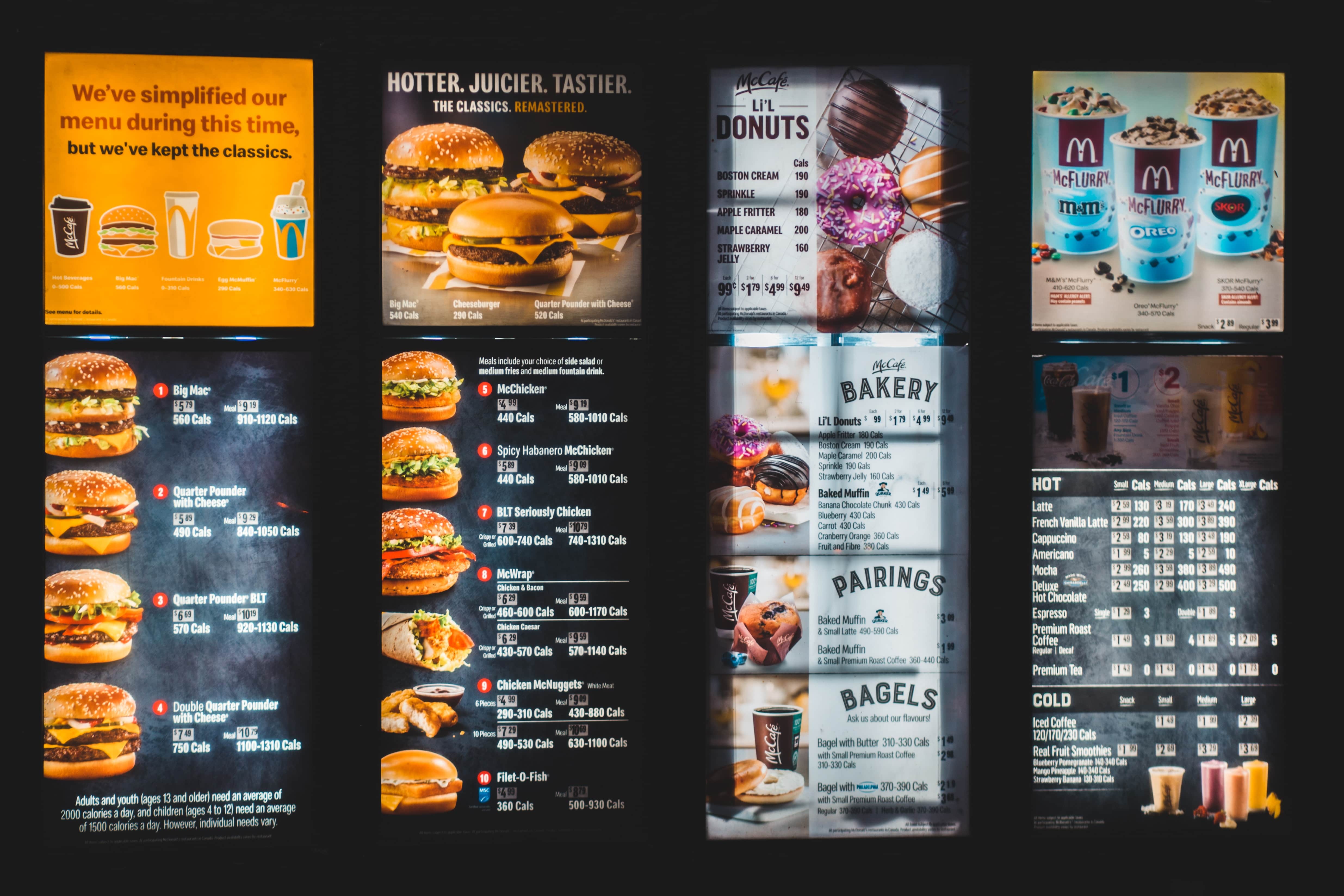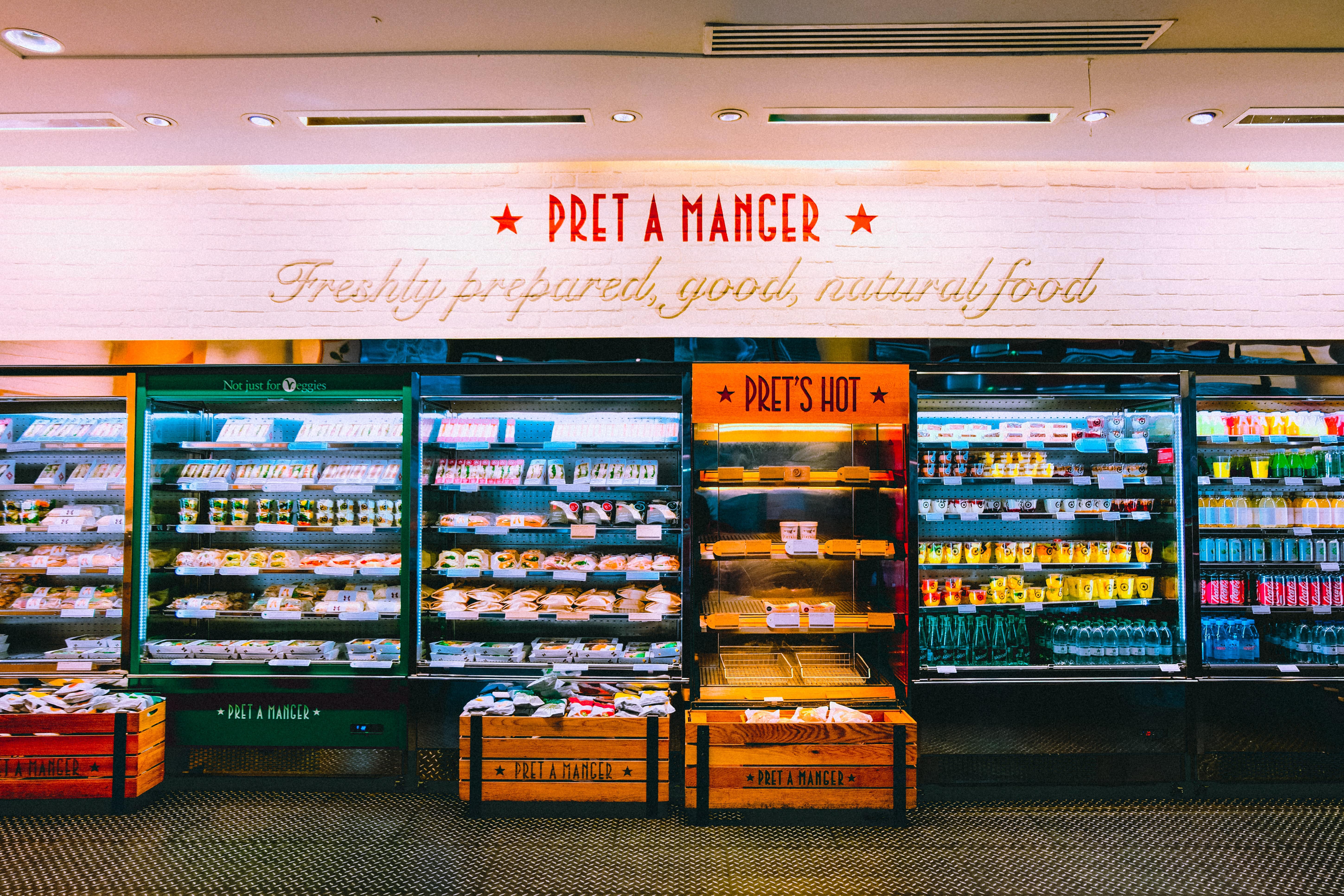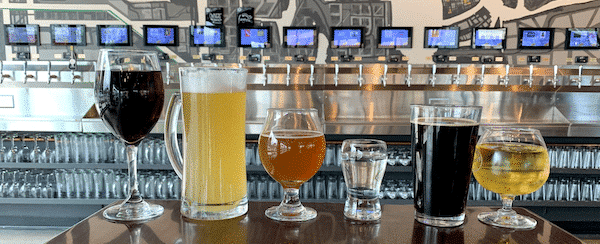WTF is Happening in the Restaurant Industry Right Now?
We spoke with service and repair management experts to better understand how current stress in the restaurant industry, like labor shortage and...
The pandemic of 2020 has forever changed the restaurant industry. Learn how potentially changing QSR footprints may affect your restaurant here.
Ask a group of people to sketch a full-service restaurant, and you’ll end up with a collection of similar artwork. One large dining room containing all of the tabletops, an adjoining bar up front, a kitchen in the back, and potentially an outdoor patio area.
When it comes to quick-service or fast casual restaurants, they’d draw a similar sketch sans the bar and maybe add a playground.
Americans are used to a particular kind of dining experience, one that is communal in nature and dictated more by ambiance than by function.
When we're in a full service restaurant, we’re used to close quarters, mood lighting, and the din of chatter generated by as many people as could comfortably fit in a limited dining space.
When we're opting for quick service, fast casual, or fast food experiences - we're looking for the drive thru and limited service dining room.
Like so many other things in 2020, the go-to quick service restaurant footprint has changed - maybe forever.
Quick service restaurants have been tasked with updating their operating procedures by re-designing a dining experience that satisfies safety concerns, abides by regulations, and creates a seamless experience for their customers.
That shift has, and will continue to, impact facilities management and put new strains on restaurant equipment and infrastructure.
However, restaurant operators, with their feet held to the metaphorical fire are flipping their footprint on its head to accommodate the changing needs of their guests.
If we look at a restaurant’s business model today, we’ll see revenue split among a greater number of dining options in a restaurant.
Heading into a restaurant to sit in a crowded dining room just isn’t the default anymore - customers are choosing alternative ways to support their favorite eateries. We’ve seen restaurant operators borrow successful strategies from retail and implement new ideas that just might change the way restaurants are designed in the future.
Here are the major trends we’ve been seeing affecting quick service restaurant footprints and ultimately the restaurant equipment inside their locations.
%20copy%202.jpg?width=1080&name=Untitled%20design%20(2)%20copy%202.jpg)
Customers have spent a majority of their time at home this year, but that doesn’t mean that they want to make every meal at home. If that means they can’t dine-in, that simply means they’ll take the food to-go. A study by Deloitte reported that before the COVID-19 pandemic, 45% of the population was ordering food for takeout once a month. Today, that number is up to 68%, a 14% jump in adoption rate over a relatively short period of time.
Restaurants are picking up on this trend and hustling to adapt. Franchises like Taco Bell and Shake Shack are planning new restaurants with smaller dining rooms so that they can focus on growing consumer behaviors like take out and drive-thru dining. Some restaurants are even turning empty hotel suites into private dining rooms for guests, taking the micro-dining room trend to the extreme with individual dining options.
Famous Dave’s is another example. The chain recently signed a lease on a 3,000 square foot space in Uptown Minneapolis that is set to open December 20th, 2020. The location will “feature an abbreviated menu” and “tabletop ordering and kiosks”. FSR Magazine reports that Famous Dave’s plans to open five to 10 of their “small-box” locations within the next year.
When the COVID-19 pandemic hit American shores, it quickly became clear which restaurants were positioned to struggle and which were positioned to thrive in a newly socially-distanced society. Fast food locations with drive-thru capabilities were ready to take on the challenge, with processes and infrastructure already in place to cater to a customer who didn’t want to enter a restaurant’s premises. Facilities management for fast casual restaurants have noticed and are planning on taking advantage of this preferred method of dining heading into 2021.

A quick case study: BurgerFi, a fast casual burger restaurant in Florida, underwent a drive-thru remodel in response to their customer’s needs, investing $50,000 to outfit their locations with the ability to take orders and deliver product via a drive-thru. Julio Ramirez, the CEO of BurgerFi, “expects to see at least an 18% bump in sales.” That’s a ROI of over 100%.
We predict that more restaurant operators will adjust their restaurant footprints to include drive-thru capabilities, allowing them to safely deliver food to their customers at a rate quicker than they could through dine-in. Quicker customer turnover plus the added benefit of COVID-friendliness? Those are just a few reasons why we see this trend sticking around for the long haul.
Restaurants have been forced to take action to survive in 2020, but many have gone one step further. They’ve asked themselves how they can thrive through the chaos, take actions that will not only keep their business afloat, but allow them to serve their customers better.
Moe’s was one such restaurant. The fast casual chain looked to technology for a solution that would give customers control and convenience - two challenges presented by the pandemic puzzle. In June, they opened their first kiosk-only location, with rows of shining displays that offered customers the opportunity for self-service.
When guests had completed their orders, they were able to socially-distance themselves from other customers, adhering to safety guidelines and building overall consumer confidence in the Moe’s brand. In addition to their kiosk strategy, Moe’s revamped their company app, added digital menu boards, and have seen the average check increase by “30 to 40 percent”.
Interestingly, many of these concepts (including the kiosk-only location) were already in development before the pandemic began, proving that it is never a bad time to take a chance on an initiative that will make your guest’s life easier and your customer experience better.

Even five years ago the thought of vending machines replacing any kind of intentional dining experience was unheard of. These standalone operations were synonymous with convenience store-grade food - not restaurant-quality food products.
Then COVID-19 happened. The thought of a contactless dining option wasn’t so far fetched anymore.
The reason that vending machines have made strides in the restaurant industry is because of the innovation occurring in that category. Today’s “smart vending machines'' are lightyears ahead of their predecessors, able to create customized salads, smoothies, and pizzas in real-time.
Fast casual restaurants may have had their interest piqued this year, when it became clear that opportunities to capitalize on dine-in guests were limited. Pix Patisserie was one. This Portland restaurant acted quickly to install a refrigerated vending machine that gave guests the ability to purchase items like “pork dumplings, squid, creme brulee, macarons,” and more without ever having to step inside their doors.
Investing in a smart vending machine that could provide a selection of a restaurant’s offerings to loyal guests and customers could not only generate revenue in the present, but pay off long term in building brand loyalty and buzz for the business.
Dining has certainly been affected by the COVID-19 pandemic, but it’s just as important to consider the beverage aspect of the hospitality industry. Restaurants make a healthy portion of their revenue from sales of spirits, and, without the ability for guests to “come in and stay awhile”, restaurant operators are missing out on valuable revenue.
Depending on what state a restaurant is located in, they may be able to offer alcohol as a takeout menu item, otherwise they are left with few options to offer their guests an adult beverage.
One option is a self-service beverage wall, which lets guests enjoy a glass of craft beer or even a mixed drink without having to engage with staff or other guests at a close distance. Innovative restaurant owners who see the beverage category as a mainstay of their business (think breweries that offer food, restaurants that are known for mixology, etc.), may consider adding a self-service wall to their footprint in order to continue to draw guests throughout the duration of the pandemic, and to harness a differentiator for their business in the post-COVID-19 world. If there’s one thing we’ve learned this year, it’s that self-service is here to stay. Some customers even prefer it.
 Photo courtesy of Pour My Beer
Photo courtesy of Pour My Beer
The restaurant industry has largely focused on the dine-in experience, but leaders in facilities management are turning their attention to a new aspect of their footprint: the great outdoors. Restaurants in every area of the country are looking to maximize whatever outdoor space may be available to them, from sidewalk greenhouses and heated patios to rooftops with functioning fireplaces.
Winter is typically a slow month for the industry, but, with the pandemic dragging on, it’s likely that people will search for new experiences. To put it bluntly, we’re bored, and any restaurant operator who finds an interesting way to let guests feel “normal” if only over the course of a meal in an igloo or separated from another group by plexiglass, will reap the rewards.
Beyond 2020, we see outdoor dining becoming a must-have instead of a nice-to-have. When new restaurants are designed, outdoor seating will be taken into consideration, as much a part of the front-of-house strategy as an indoor dining room. New concepts may pop up out of this pandemic, perhaps more beer gardens making an appearance in larger cities, or restaurants opting to create more permanent outdoor fixtures as a part of their overall experience.
The term “ghost kitchen” has gotten buzz in the restaurant industry, typically used in hypothetical conversations about the future of the hospitality business. The COVID-19 pandemic brought the hypothetical into reality quicker than any restaurant operator could have imagined, and now ghost kitchens are a concept that are actively being pursued by forward-thinking restaurateurs.
Ghost kitchens are essentially an off-premises concept that involves housing the equipment for production of food in a different location than where that food is delivered to the customer. They offer restaurateurs with a way to extend a delivery-only service to the consumer. In this future, the restaurant footprint doesn’t include a kitchen at all.
With no customer purview into the production end of the experience, restaurant operators can utilize ghost kitchens to service multiple brands in one space, making it an economical move. A recent market research study estimates that delivery-only restaurants could be a $1 trillion business by 2030.
In 2020, though, there are few groups who have done this successfully. Family Style Kitchens is leading the way as a fully-digital concept group, offering a varied selection of menus that consumers can choose from and have delivered directly to them. Think: a gourmet burger concept, a cauliflower pizza shop, and a breakfast burrito joint all creating entrees out of the same kitchen.
The pandemic has thrown the restaurant industry, forcing many to rethink their footprint and opt for innovative trends in hopes of maintaining a customer base and continuing to generate revenue. These trends will certainly stick around until the “end” of the pandemic, but which will remain for years to come?
Our hypothesis is that the innovations that drive efficient, seamless experiences for customers will last.
Customers have had time to be exposed to a multitude of ways to dine over the past year, and they’ll continue to gravitate toward service with the least resistance.
Restaurants will no longer be thought of as a singular dining room, but rather an omni-channel experience that will continue to evolve with technology and consumer preferences.
We spoke with service and repair management experts to better understand how current stress in the restaurant industry, like labor shortage and...
The pandemic of 2020 has forever changed the restaurant industry. Read here to learn about new restaurant equipment needs in the new world.
The pandemic of 2020 has forever changed the restaurant industry. Read here to find out how your restaurant is impacted in The Next Normal.
GET OUR MONTHLY NEWSLETTER
Each quarter, we break down common restaurant R&M issues, share company announcements and spotlight industry change makers. Get free advice and updates in your inbox to resolve issues before equipment breaks down on you.